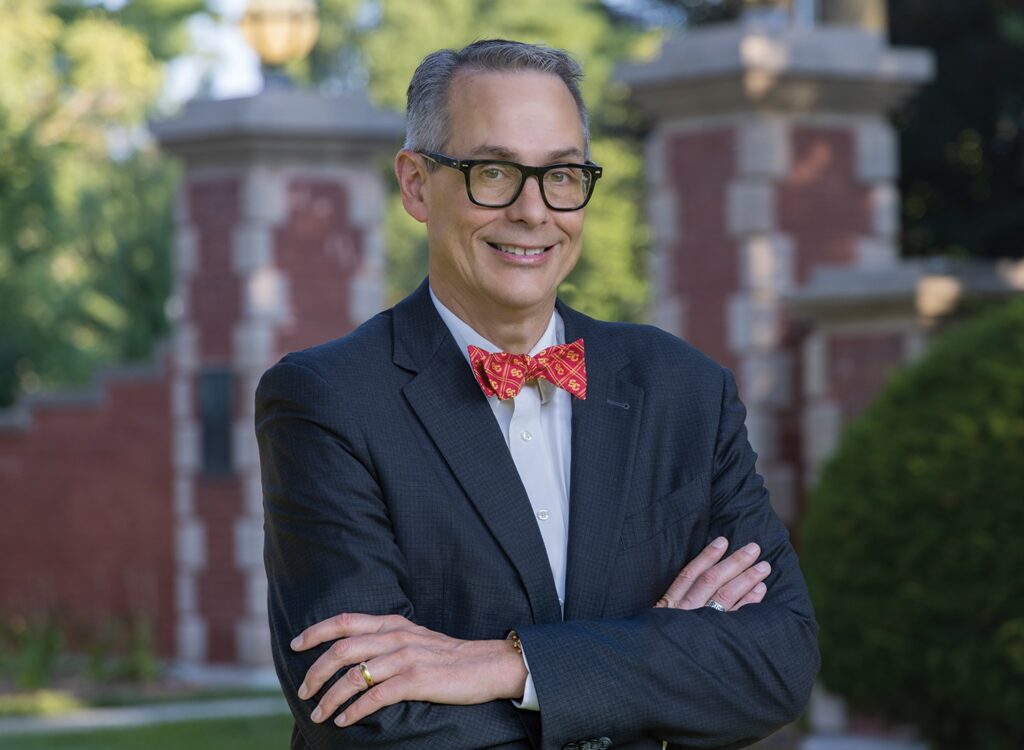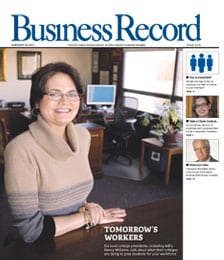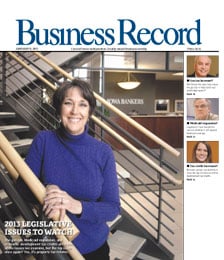ISU’s pavement technology center has concrete plans for the future

What if every highway construction project – Interstate 235 through Greater Des Moines comes to mind — could truly be a once-in-a-lifetime experience, with concrete roadways built to last 50 or 60 years?
For some people, the thought of quieter pavement that doesn’t drown out their car stereos at highway speeds may be music to their ears. Or, how about a less splashy roadway that doesn’t let the truck in the next lane douse cars with rain water?
Making concrete highways safer, easier to maintain and longer lasting are among the goals of the Center for Portland Cement Concrete Pavement Technology at Iowa State University. Since its formation five years ago, the center has collaborated on more than 30 public-private engineering research projects, supported by more than $8.5 million from federal, state and industry sources.
With a recent $10 million earmark in the federal highway reauthorization bill, the center expects to leverage at least an equal amount in funding as it leads a national program that will coordinate an estimated $250 million in highway research projects over the next 10 years.
“We’re working in a very collaborative way with industry and with research funders to be sure the work we do advances an agenda of national significance,” said Tom Cackler, director of the pavement technology center. In March, the board of directors of the American Concrete Pavement Association Center’s board made a commitment to designate the Iowa center as the National Concrete Pavement Technology Center, an initiative Cackler said should be finalized by the time the ACPA’s annual convention convenes in December.
The national focus will probably allow the center to add an additional researcher and another faculty member to its staff, along with more collaboration with researchers across the country, Cackler said. “Our network of business partners will probably expand as well,” he said.
The center was chosen in May 2003 through a competitive bid process to lead the development of a national research plan, known as the Long-Term Plan for Concrete Pavement Technology, or the CP Road Map, for short. Designed to guide the development of the “next generation” of concrete pavements, the CP Road Map combines more than 250 research problem statements into 12 integrated research tracks.
“Obviously, when you look nationally, there’s a lot of research going on,” Cackler said, “and it’s a moving target.” In coordination with a board made up of industry and agency representatives, “there will be a real focus, not only working with private industry and the Federal Highway Administration, to manage that CP Road Map over the next six months,” he said.
“There are several major themes we’re trying to accomplish,” he said. “One of the topics the projects are aligned along is how to make pavements last longer — from pavements designed for 20 to 30 years to life of 50 to 60 years. Obviously, there will be less disruption to the traveling public and less cost by going with those longer-life highways.
“Another major emphasis area is looking at the surface characteristics, not only how to make pavements smooth and have good safety characteristics, but to have them be low-noise so they’re quieter to ride on, have less spray when they’re wet and better visibility at night,” Cackler said.
With the huge amount of highway infrastructure that is rebuilt each year, the center also is focused on cost-effective rehabilitation strategies, he said.
The center’s work doesn’t take place only in the laboratory. For the past 12 months, the center has operated a mobile concrete testing laboratory that has so far traveled to highway construction sites in 12 states
“One of our main focuses is to look at concrete in the plastic state,” said Heath Gieselman, a research technician, “because once it hardens, it’s pretty hard to change.” The field technicians sample the concrete as it’s placed by construction machinery and test it for characteristics such as the quantity of air dispersed throughout the material, which affects how the concrete performs through the freeze-thaw cycles.
The lab has become an education and outreach vehicle in its own right, Gieselman said. For instance, more than 400 industry professionals toured the lab during a recent national conference in Colorado Springs, Colo.
“What we’ve found is when we take out the lab, people want to see it because not everyone has access to this technology,” he said.







